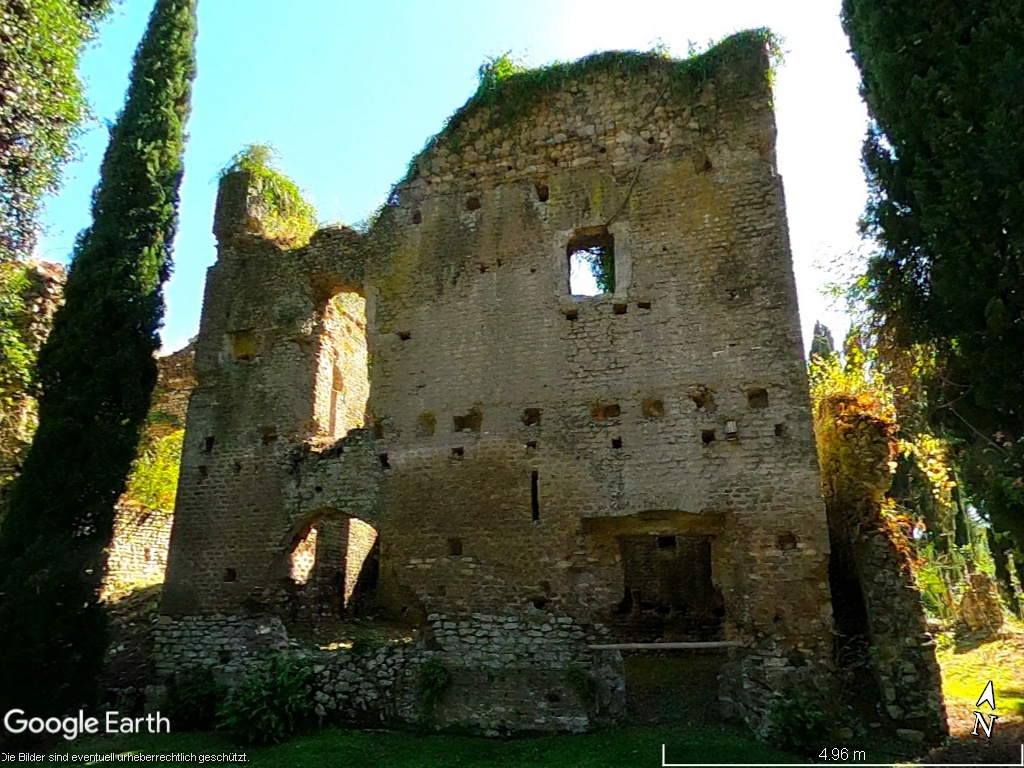Post by willi1 on Dec 13, 2023 11:14:11 GMT
The Garden of Ninfa is a Natural Monument of the Italian Republic, located in the territory of the municipality of Cisterna di Latina.
The village of Ninfa already existed in Roman times and was a small agricultural center.
In the eighth century, the Via Appia and the Via Severiana became impassable due to the encroachment of the swamp, which led to a shift of commercial traffic to the foothill road that passed near Niinfa: the imposition of a toll on anyone who wanted to use the road proved this proved to be a source of wealth and soon Ninfa became a small urban center. with numerous houses and churches.
In the Middle Ages, Ninfa had more than 150 houses, several churches, mills, bridges, two hospices, a castle and a town hall. The city was surrounded by a 1,400 meter long defensive wall with watchtowers.
The castle was built in the 12th century and is located near the lake, outside the city walls.
A dispute between the Avignon Pope Clement VII and the Pope of Rome Urban VI. sparked a violent battle that ended with a siege of Ninfa in 1380. Ninfa was sacked and completely destroyed in 1381 by neighboring towns using pickaxes. After that, Ninfa was never rebuilt.
Some dwellings were used to cultivate the surrounding land, but later the encroachment of the swamp and malaria forced the few inhabitants to leave the area.
Ninfa fell into disrepair and was largely forgotten.
It was not until 1921 that Gelasio Caetani began reclamation of the site and the restoration of some of Ninfa's ruins. The area was designed in the English garden style and is described as the most romantic garden in the world.



The village of Ninfa already existed in Roman times and was a small agricultural center.
In the eighth century, the Via Appia and the Via Severiana became impassable due to the encroachment of the swamp, which led to a shift of commercial traffic to the foothill road that passed near Niinfa: the imposition of a toll on anyone who wanted to use the road proved this proved to be a source of wealth and soon Ninfa became a small urban center. with numerous houses and churches.
In the Middle Ages, Ninfa had more than 150 houses, several churches, mills, bridges, two hospices, a castle and a town hall. The city was surrounded by a 1,400 meter long defensive wall with watchtowers.
The castle was built in the 12th century and is located near the lake, outside the city walls.
A dispute between the Avignon Pope Clement VII and the Pope of Rome Urban VI. sparked a violent battle that ended with a siege of Ninfa in 1380. Ninfa was sacked and completely destroyed in 1381 by neighboring towns using pickaxes. After that, Ninfa was never rebuilt.
Some dwellings were used to cultivate the surrounding land, but later the encroachment of the swamp and malaria forced the few inhabitants to leave the area.
Ninfa fell into disrepair and was largely forgotten.
It was not until 1921 that Gelasio Caetani began reclamation of the site and the restoration of some of Ninfa's ruins. The area was designed in the English garden style and is described as the most romantic garden in the world.
The garden is owned by the Roffredo Caetani Foundation and can only be visited with a guide who follows a prescribed route.



41.580947° 12.954562°
